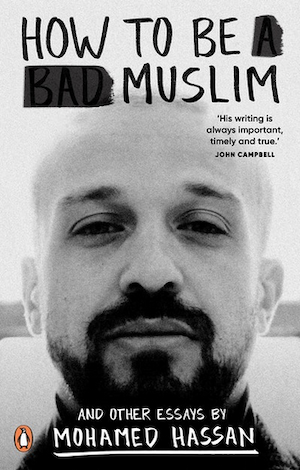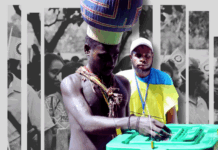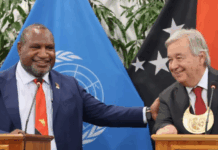
REVIEW: By Adam Brown
How to be a Bad Muslim is a collection of 19 short essays by Mohamed Hassan, an award-winning poet and an international journalist. He was born in Cairo, but moved to Auckland at the age of eight.
This personal history underlies much of his writing: his fond memories of Egypt and its collectivist society and extended families, versus his adolescence as a migrant with a clearly identifiable Muslim name in individualist New Zealand. After 9/11, suspicions deepened and Muslims were subject to collective guilt and racial profiling, despite that fact that Muslims around the world condemned the attacks.
“To be granted citizenry and promised equality but to always be held at arm’s length. To be accused of plotting disharmony when all we have ever fought for was integration, acceptance, peace.” In other words, to be “welcome, but not welcome”.
This is all documented in chapter 11: “How to be a bad Muslim.”
Memories from his youth include spooky childhood memories from Cairo (chapter 2, “The witch of El Agouza”), followed by real-life memories and standing up to being bullied in school in New Zealand by someone who later became an All Black (chapter 3, “Showdown in the Kowhai Room”).
As a Muslim, the author’s refusal to enter the binge drinking culture of New Zealand, while entering the local poetry scene, shows that it is possible to enjoy oneself without alcohol (chapter 4, “The last sober driver”).
The author is well acquainted with IT, the internet, YouTube, social media, etc. An important chapter is the first, entitled “Subscribe to PewDiePie”, being the last words of the Christchurch shooter before entering Al-Noor Mosque. The chapter documents the seemingly innocent growth of YouTube and social media over a decade, all leading ultimately to the Christchurch massacre.
Many passages in the chapters touch on the misrepresentation of Muslims and Islam, as the author reports from first-hand experience. He was bullied at school, given the cold shoulder at work, passed over for promotion, regularly subjected to “random” searches at airports, etc. His brother no longer goes with his two young sons to Friday prayers in Manukau, because he does not feel they are safe.

“The growing mistrust was fuelled by grotesque and irresponsible media narratives that portrayed Muslim immigrants as an existential threat, and the public believed it” despite the fact that the public knew little about Islam and Muslims, and failed to find out about it.
“A Sikh man studying at a café outside his medical school had police called to interrogate him after a woman spotted wires hanging out of his bag. They were headphone cables.”
In chapter 10 “Ode to Elliott Alderson”, he catalogues the misrepresentation of Muslims in film, involving famous actors such as Rami Malek, Omid Djalili, Hank Azaria, Sacha Baron Cohen, Christian Bale, and Sigourney Weaver.
Throughout the chapters, the author reports his memories and experiences, but often with a sense of humour, and with a poet’s turn of phrase. He describes his baby sister sleeping “as only an infant can, her fingers curled into themselves and her breath like a moth dancing around a faint sun”.
As an Egyptian Muslim growing up in New Zealand, he was “a kid who wore the question of belonging like an ankle monitor everywhere I went.” As a keen observer of the effect of IT, the internet and social media, he wonders, “Will our greatest of grandchildren unearth our metadata and try and decipher what our selfies said about our civilisation?”
This is an important book for anyone wanting to understand the problems immigrants — especially Muslims — face in New Zealand.
- How to be a Bad Muslim and other essays, by Mohamed Hassan. (Penguin/Random House, New Zealand, 2022, NZ$35). ISBN 9780143776215
Dr Adam Brown is an Auckland academic, author and the editor of a New Zealand Muslim publication. This review is published in collaboration with Pacific Journalism Review.













































